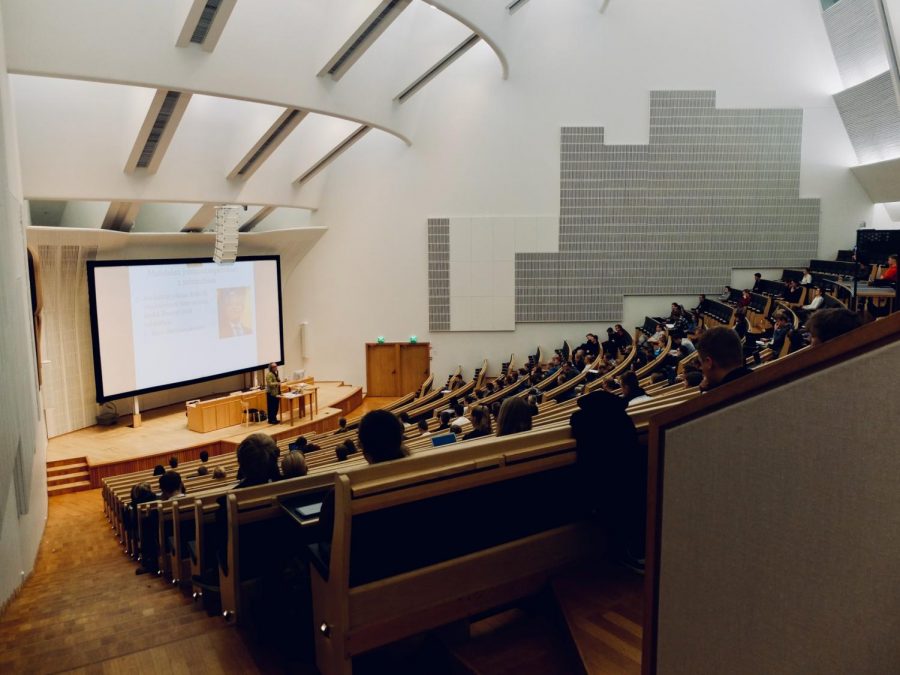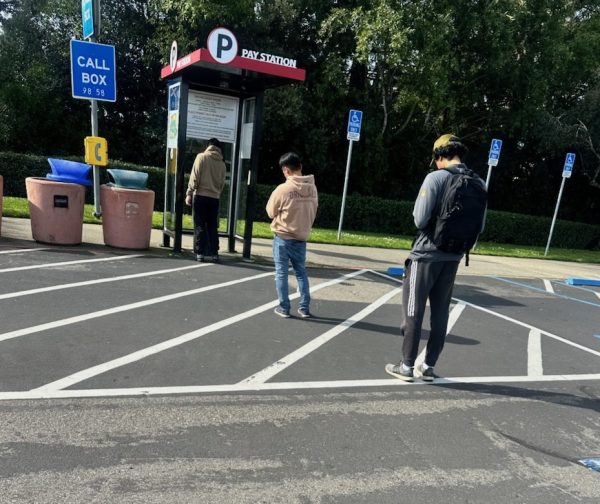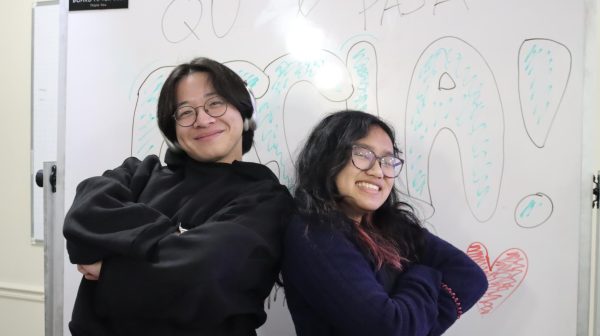The Precarious Nature of Being a Lecturer in Post-Secondary Education
An analysis of how Covid-19 has impacted higher education instructors.
The majority of instructors at colleges and universities are ‘contingent faculty,’ who are university instructors not on the tenure track and teaching either part-time or full-time. Contingent faculty members make up the bulk of post-secondary instructors but are hired on a temporary, short-term basis and nearly always have low job security.
Everyone has been affected by the pandemic; on top of the added stress of protecting against a deadly virus, post-secondary contingent faculty, also called lecturers or non-tenure-track faculty members, face the precarious reality of low job security, which includes the possibility of losing their (and maybe their family’s) health insurance.
The Pioneer spoke with a number of such faculty to hear the diverse perspectives of those who work at California State University, East Bay. East Bay is part of the United States’ largest university system, the 23-campus California State University.
They each discussed their feelings and opinions on important topics associated with higher education, including job security, benefits, low enrollment and what that means for instructors, particularly amid a pandemic.
Some lecturers devote their careers to teaching, and others are teaching part-time at a university but are also working outside of the classroom at their second job or career.
Faculty members on tenure-track, including assistant, associate and full professors, account for less than 30 percent of the nationwide instructional faculty workforce. Part-time and full-time non-tenure-track faculty members account for the most significant number of post-secondary educators, with more than 64 percent combined at the Baccalaureate level and 73 percent for all institution types, Inside Higher Ed reports.
What is tenure or tenure-track and why is it important?
In addition to being a job classification, tenure provides a faculty member with ‘academic freedom,’ a complex concept that includes the freedom to express one’s ideas without fear of retribution, such as losing one’s job. Tenure protects faculty members from being fired for non-work-related reasons, but it also serves the community and the public by protecting the character of research and teaching, furthering post-secondary institutions’ probity, ProCon.org notes.
“Students at U.S. colleges and universities are more likely to be taught by non-tenure-track faculty members working in full-or part-time contingent positions than by tenure-stream faculty,” The American Association of University Professors reported.
Clarissa Eaton, a former associate lecturer of composition at the University of Massachusetts at Boston (UMass), discusses her experience of being let go shortly after the spring 2020 semester was completed. UMass sent an email to more than half of the non-tenure-track faculty stating, “The University is giving notice… of its intent not to appoint or reappoint any associate lecturers or clinical associate lecturers for the Fall 2020 semester.”
Eaton discusses her contributions and feelings about the University, detailing the differences lecturers or non-tenure-track faculty members have compared to those on the tenure track.
“Still, I’ve always felt a little bit of insecurity, knowing my job was not guaranteed. I’ve known it would be three years before I’d get a continuing contract, and it would take two years to be promoted to lecturer. But I’ve wanted to stay at the University, so I’ve taken the risk,” Eaton said.
Universities have the ability to hire more instructors on a temporary lecturer basis rather than hiring tenure-track positions. With low rates of enrollment due to the health crisis, many universities, dependent upon tuition for funding, are experiencing economic hardships, forcing them to cut ‘unnecessary’ costs. As a result, universities are trying to hire fewer tenure-track positions, the most costly expense.
“Oftentimes, there are more people with PhDs than there are tenure track positions,” Dr. Jocyl Sacramento, an assistant professor in the Department of Ethnic Studies at California State University, East Bay, explained.
Along with teaching, tenure-track professors are involved in developing research within their field. Some of the advantages that tenure-track professors have that lecturers don’t [usually] have are increased job security and academic freedom.
Casey Beck, a lecturer in the Department of Communication at CSUEB and owner of a documentary video production company, said lecturers are always at the bottom of the pecking order when it comes to faculty.
“I think as a lecturer, you are definitely the lowest rung on the academic ladder as far as the hierarchy of instructors,” Beck said. “I will say, there’s been a lot of work that’s been done by the [California Faculty Association] union to ensure that lecturers have as much job security as possible. At the same time, the nature of the job is that it is not as secure or as stable as a tenure track job, or certainly as a tenured job.”
The California Faculty Association (CFA) represents all California State University faculty members. Some of the CFA’s goals include ensuring students receive a quality education, policies are put in place guaranteeing access to post-secondary education, and fairness to those who make their living as a teacher.
“The CFA has been very good at bargaining, our position at bargaining for better salaries, [and] better working conditions,” CSUEB Department of Communication lecturer Lisette Poole delineated.
Each of the 23 CSUs has CFA campus representatives who double as faculty members at the university. Their job is to support the university’s CFA members by answering questions, conducting workshops, and advocating for faculty when their rights have been violated.
Every semester, CFA reps who specifically advocate for lecturer faculty organize two to four workshops, known as “Nuts and Bolts,” to educate lecturers on what they need to know about their position as a lecturer faculty member and how the CFA works.
“It’s the nuts and bolts of the benefits that they have, when they can have them, what they could do if they lose some of their work or benefits, the raises that are available, what their appointment letter means, how they should communicate with their Department or with the University about their qualifications for their work, and many other topics” Gretchen Reevy, CFA Lecturer Rep and lecturer in the Department of Psychology at CSUEB, described.
Due to low enrollment, Poole didn’t teach any classes during the spring 2021 semester. She is a journalist who previously held positions at Associated Press and was a correspondent in the Middle East.
“I find ways to engage myself in a lot of stuff,” she said, “So I was not pining for work. But it would have been nice to have that income.”
Many non-tenure-track instructors either teach at multiple colleges and universities during one semester, work for a company, or run a business to make ends meet. Tenure-track faculty have guaranteed incomes typically involving a variety of duties: teaching, university service, and professional duties; their salary doesn’t change based on the number of courses they teach. In contrast, lecturers are paid based on the number of classes/units they teach. For example, suppose one semester a lecturer teaches 12 units and another semester they teach nine units. In that case, their pay will be significantly reduced, and many have to resort to another job or teaching appointment elsewhere to subsist.
All post-secondary instructors receive healthcare benefits as long as they’re teaching at least six units each semester. When lecturers are not given classes for a semester, they lose those benefits.
“We lose any medical advantage or benefits that you may have had,” said Poole.
At the time, her vision care was being covered by CSUEB, and since she didn’t teach classes in spring 2021, Poole wasn’t able to get her vision care covered. However, she was fortunate enough to receive benefits due to her husband’s service in the Air Force.
The suspension of the required Writing Skills Test (WST) in the midst of Covid-19 has also impacted lecturers. Students must complete the Writing Skills Test (WST) requirement to graduate. Normally there are two options for students to fulfill this requirement. Option one: take the test and pass, and option two: enroll in and pass a first-tier writing course, Engl 300 or 301, and possibly a second-tier course as well.
CSUEB suspended the test and requirement indefinitely in March 2020, a change that had a major impact on the English Department.
“Being a lecturer is challenging. Covid has made things very difficult because the English Department had 23 WST writing support courses. It got killed with Covid, which is understandable because there is no in-person testing,” a lecturer in the Department of English at CSUEB said.
With regards to vacation time, instructors don’t have the same vacation time in comparison to other professions.
“Academic year employees do not earn vacation. If you are in a ten (10) or twelve (12) month position, you are eligible to earn two vacation days (16 hours) per qualifying month,” the California State University System states.
Vacation time is legally allocated to post-secondary faculty members, but most schedule their vacations during the same breaks students get.
Post-secondary instructors have faced many challenges since March 2020, especially with the uncertainty of being a lecturer or non-tenure-track faculty member.
Lecturers and non-tenure-track instructors are doing important work and should be sufficiently compensated and provided better job security; it seems as though their job/career was worrisome without Covid, but the pandemic has brought many uncertainties to the surface.







